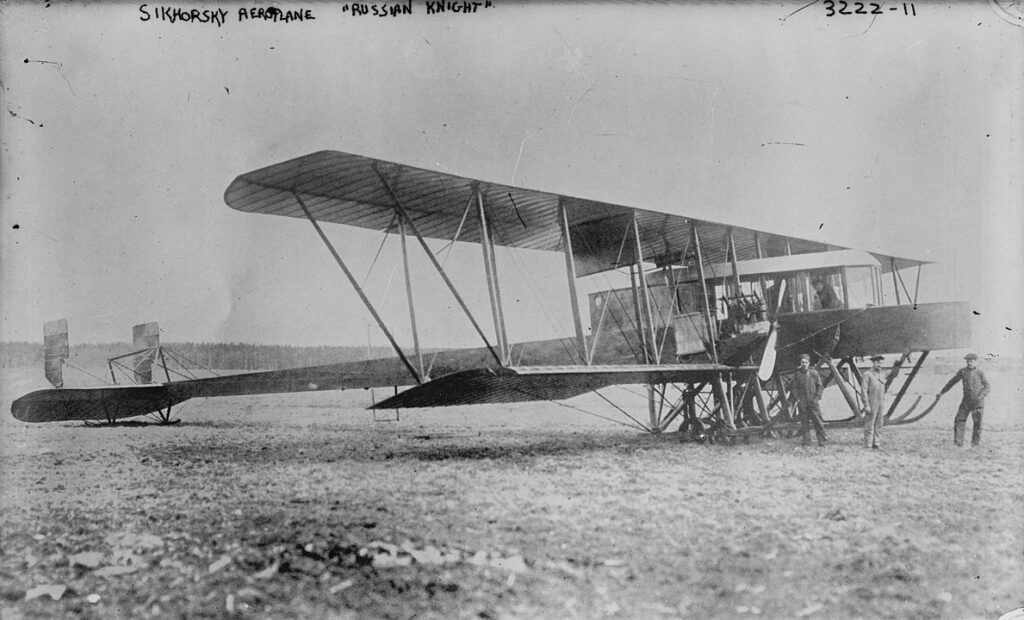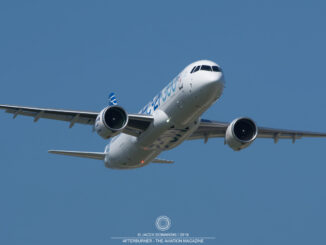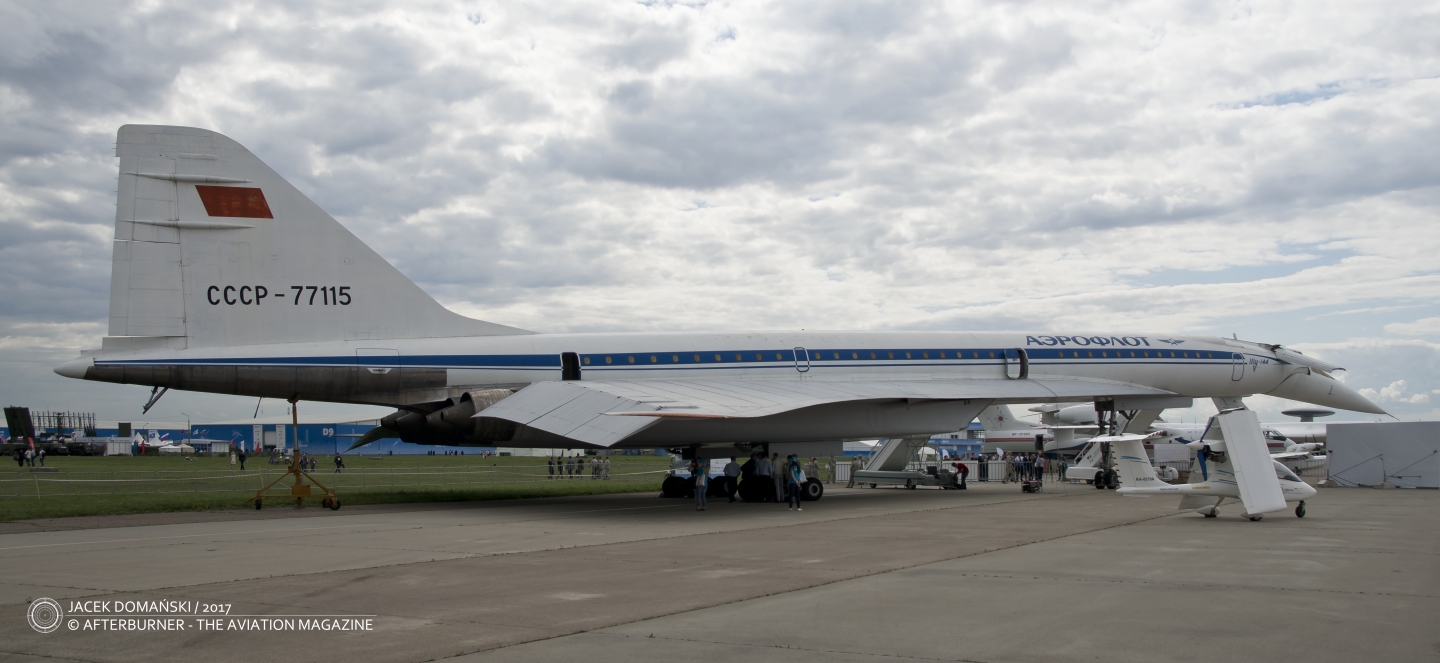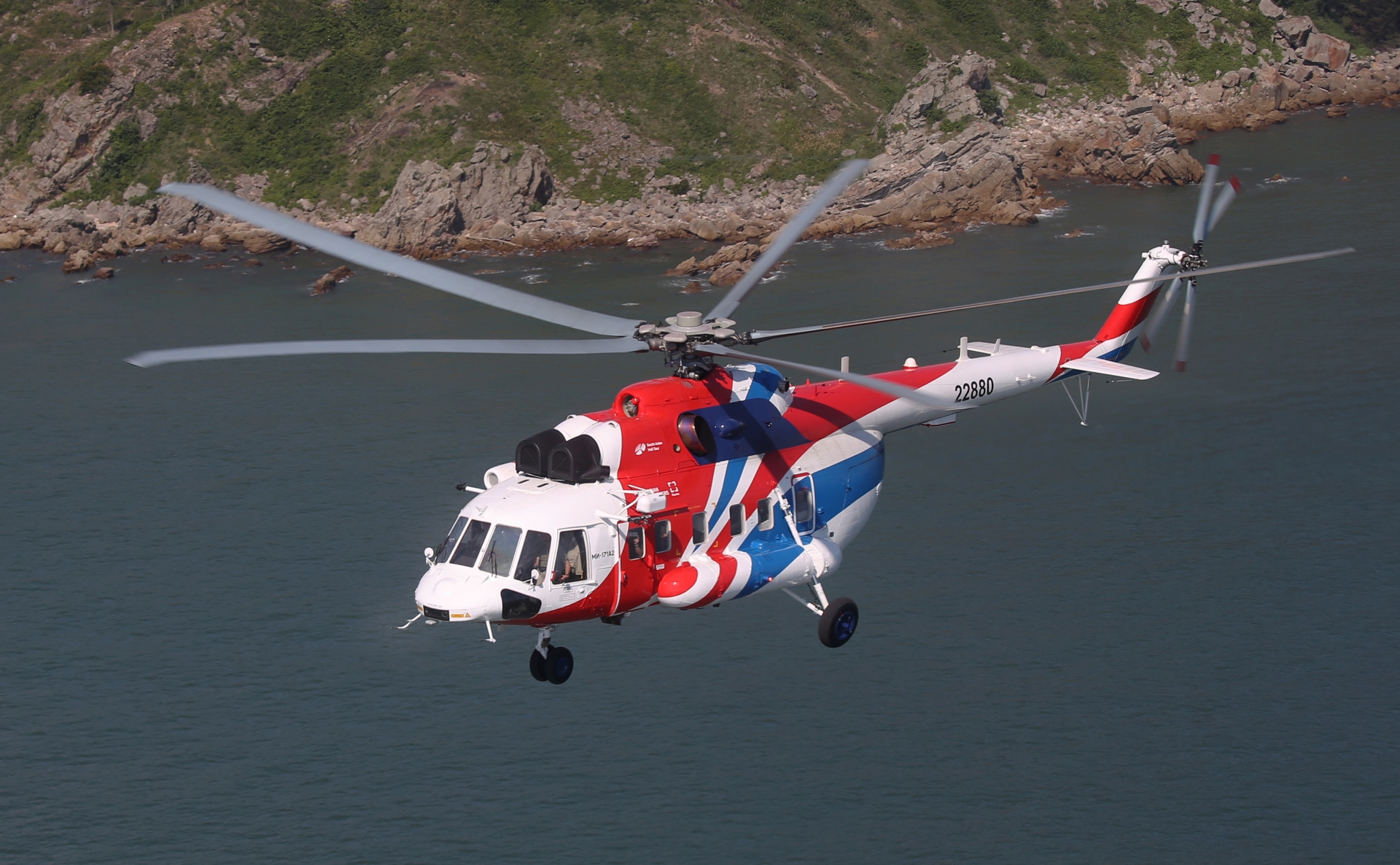 On 23rd June 1913, Igor Sikorsky performed the first flight of his heavy aircraft, after re-designing it into four-in-line engine configuration.
On 23rd June 1913, Igor Sikorsky performed the first flight of his heavy aircraft, after re-designing it into four-in-line engine configuration.
In 1911, the young aviation pioneer and aircraft designer, Igor Ivanovich Sikorsky, began his work on the first four-engine aircraft in the world. It had to be big enough to accommodate a comfortable passenger cabin that allowed the people on board to stand up and walk during the flight. At that time, aeroplanes were still fragile constructions with maximum take-off weight of approximately 1,000 kg. Therefore, Sikorsky´s idea to build a gigantic aircraft with take-off weight exceeding 4,000 kg seemed a bit insane.
Nevertheless, at the turn of 1912 and 1913, the aeroplane was completed. Initially, it carried the French name ´Le Grand´ (English: big) and was equipped with only two engines. The first flight of ´Le Grand´, was performed in spring of 1913. The exact date varies, depending on the source – usually, the date of 15th March is mentioned, however there are some Russian aviation historians that claim it was only the day the aeroplane was finished and the maiden flight occurred on 27th April.
Shortly after the first flights it turned out that the two engines generated not enough power for such a heavy aircraft. As a result, Sikorsky decided to add two more powerplants. Eventually, the aeroplane was powered by four engines in tandem configuration, with pull and push propellers. That four-engine version performed its maiden flight in May of 1913.

Together with changes in the design, also the name of the aircraft evolved. The initial name was changed into Гранд Балтийский (English: Grand Baltic), then Большой Русско-Балтийский концепт (English: Big Russo-Baltic Concept) and finally in June, into Русский Витязь (English: Russian Knight) or just S-21.
Although the maiden flight of the first four-engine aircraft in the world was successful, Sikorsky was not satisfied with the aeroplane performance. Therefore, he resigned from tandem engine configuration and mounted all four engines in-line, outboard the leading wing edges.
On 23rd June 1913, the redesigned aircraft performed its maiden flight. The four-in-line engine configuration invented by Sikorsky proved to be the right choice and became one of the future standards of aeroplane design.
In August of the same year, Русский Витязь set up the new world record in duration of flight of one hour and fifty-four minutes.
If you want to learn more about Igor Sikorsky and his following project – С-22 Илья Муромец (S-22 Ilya Muromets) – please check our article issued in February of 2021.
Cover photo: S-21 Russky Vityaz, Wikipedia, Public Domain



